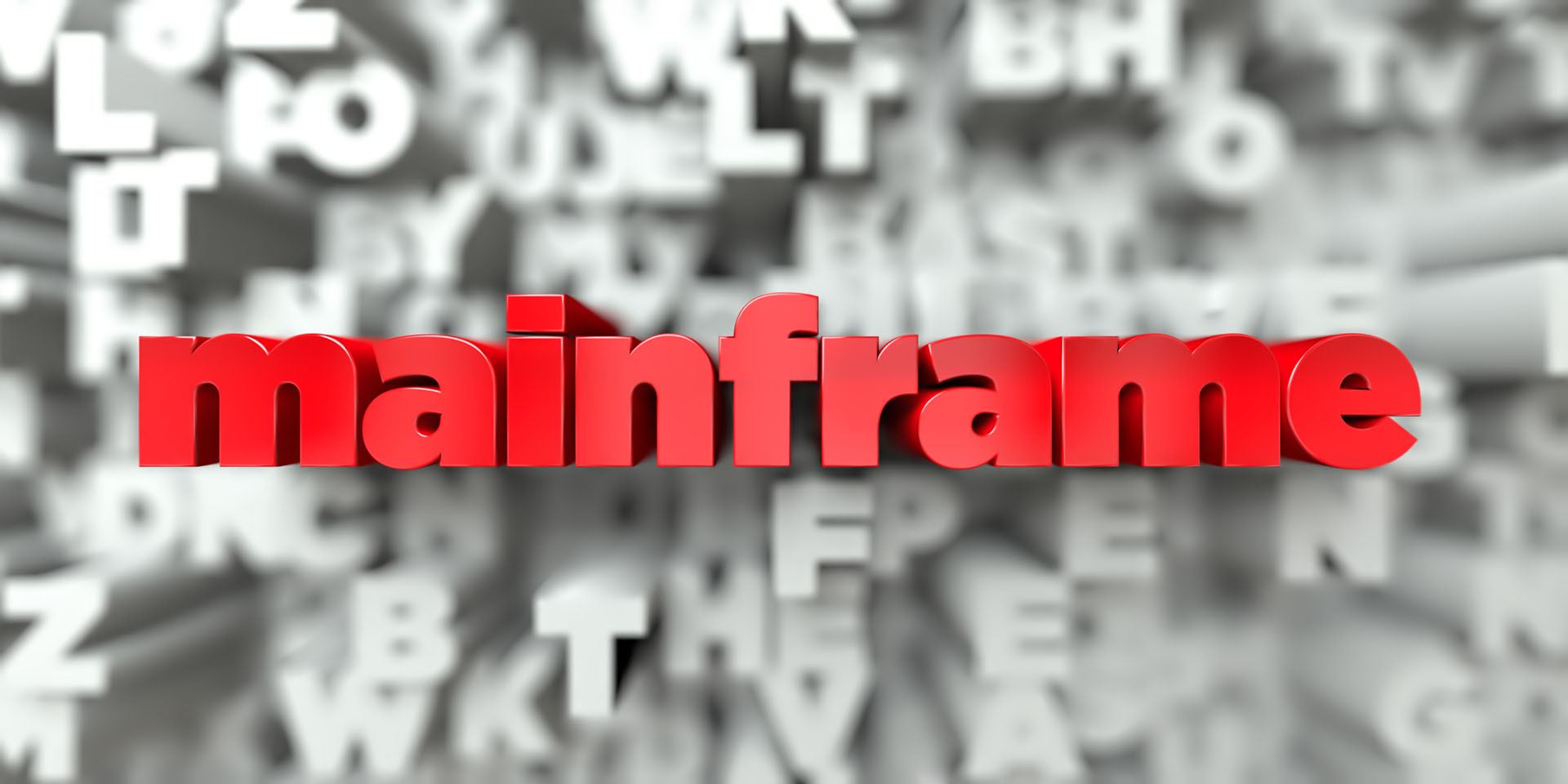As companies migrate to the cloud, they are quickly realizing that the mainframe still has a place in the modern IT environment.
When you hear the word mainframe, images of massive antiquated systems likely come to mind. Many companies view mainframes as legacy systems and are looking towards the cloud as a more modern IT infrastructure for their business. Yet, despite the evolving landscape of the IT environment, businesses are quickly realizing that the mainframe is a powerhouse that cannot be easily replaced. Mainframes are used to process about 95% of the transactions in the banking, insurance, airline and retail industries. They often run mission critical workloads that have specific performance and security requirements best served by a mainframe computer.
A New Generation of Mainframes
Today’s mainframes are much sleeker, more powerful and more relevant than ever before. Much of today’s online transaction environments rely on mainframe computers. The IBM z is the current generation of the world’s most powerful transaction processing system, capable of running more than 19 billion fully encrypted transactions per day, with a footprint as small as a standard rack. It addresses online security by enabling the ability to encrypt data at light speed. Currently, only about 4% of online transactions are encrypted. This is a game changer in terms of cyber security. Even if hackers can access data, the encryption makes it unusable. The new platform can also identify potential tampering and quickly encrypt the programming interfaces that tie apps and services together. Storing sensitive data-at-rest on an IBM z provides encryption protection against potential exposure, as long as its encryption key is secured. This level of encryption is an attractive option for a company as part of their loss prevention plan.
The total cost of ownership (TCO) of the new generation of mainframe has improved from previous generations. Businesses will also see their software costs go down as they invest in newer mainframe technology. When analyzing cost savings, many businesses fail to anticipate the additional cost for IT staff to maintain a server farm which is often more expensive than the cost of mainframe hardware and software maintenance. In some cases the additional cost of manpower eliminates savings, making the mainframe a more attractive option. Mainframes still require an extensive infrastructure to house and maintain them, and increasingly, businesses are turning to managed services providers to house their mainframe in a purpose-built Data Centre, further reducing their operating costs.
When organizations are strategizing the future structure of their IT infrastructure, they also need to consider that the mainframe can work in conjunction with other servers allowing companies to utilize the mainframe as a data warehouse or transaction processor. Regardless of the setup that is right for an individual business, the mainframe remains much more stable and secure than a server cluster.
Linux vs. z/OS
In the early 2000’s, IBM invested $1billion in the Linux Operating System. Linux, a free operating system, is increasingly utilized by companies for their critical workloads. Linux, combined with the mainframe’s speed and reliability, can reduce the cost of running critical applications and improve data security.
IBM mainframes support both Linux and z/OS platforms giving businesses greater flexibility. Although you can perform most of the same tasks on Linux as the z/OS, there are some differences that impact which OS is best for an organization. Some tasks are easier on the z/OS, while others are easier on Linux. Selecting the operating system that is right for you depends on how you intend to use it and which OS provides you with the most user-friendly experience. Factors to consider include the apps you intend to run, how much mainframe experience your IT team has, and how important backward and forward compatibility are to your business.
A significant benefit to using Linux on IBM z is its Integrated Facility for Linux (IFL), a processor dedicated to Linux workloads. For example, IBM z14® offers processing capacity with up to 170 user-configurable IFLs on one server, up to 30 IFLs on the z14-ZR1. Operational efforts and software costs are all reduced when Linux is used on IFL instead of other processors. What is gained is significant processing capacity.
Regardless of the OS that is right for your business, the mainframe remains the most reliable and secure platform available, and it is clear that the mainframe has strong footing in the future of IT infrastructure.
To find out more about Cover-All’s managed mainframe services, call 1-833-268-3788, or visit https://www.coverallmcits.ca/managed-it-services/mainframe-managed-services/

